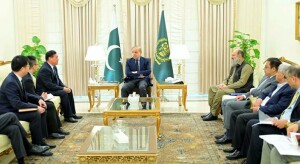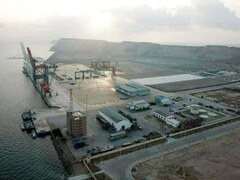In order to meet the challenges of WTO Regime it is imperative for the organisation to have globally sustainable competitive advantage, which is necessary ingredient for its long-term success and survival.
Creating a sustainable competitive advantage means to manage strategically and entails identifying, creating or acquiring and managing an organisation's critical capabilities and resources.
Every organisation needs customers and must satisfy them if it wants to survive. Customers want some type of value from the goods or services they purchase or obtain.
The value that customers get from products which arises from three broad categories:
(1) The product is unique, different and of good quality
(2) The product is low priced
(3) The providing organisation has the ability to respond to specific or distinctive customer needs quickly.
These requirements of potential national and international customer can be met by an organisation by the installation of Enterprise Resource Planning (ERP).
ERP evolved as a strategic tool through a series of continuous innovations: Computers, MRP, Closed Loop MRP, MRP-II, ERP/MRPII and ERP/APS.
Prior to 1960 the first machine in the shape of computer was introduced to cater the need of accounting, inventory and payroll.
The inventory management includes the use of Economic Order Quantity Technique, under which each item in the stock is analysed for its ordering cost and the inventory carrying cost.
A trade off is established on the phased out expected demand of one year, and this way the most economic ordering quantity can be decided. This technique in principle is a reactive way of managing inventory.
In 1960 a new technique of Material Requirement Planning (MRP) evolved. This was a proactive manner of inventory management.
This technique fundamentally explodes the end product demand obtained from the Master Production Schedule (MPS) for specified product structure, which is taken from Bill of Material (BOM) into a detailed schedule of purchase orders or production orders taking into account the inventory on hand.
MRP proved to be a very good technique for managing inventory, but it did not take into account other resources of an organisation.
In 1970 MRP was modified by introducing Closed Loop MRP, which is a series of functions including MRP. In this technique, the capacity of the organisation to produce a particular product is also taken into account by incorporating a module called Capacity Requirement Planning (CRP).
Hence a feed back loop is provided from the CRP module to Master Production Schedule if there is not enough capacity available to produce.
In 1980 the need was felt to integrate the other resources of manufacturing organisation.
Hence Manufacturing Resource Planning (MRP II) computer system have quickly evolved which adds two additional elements (1) the ability to translate the terms of operating plant like pieces, pounds, meter etc into financial terms which is in rupees.
And (2) the ability to ask what if questions and to obtain detailed actionable answers. MRP II offers an innovative interactive approach and alerts you to impending shortage visually.
Master Production Scheduling provides an instant picture of current status of every item in your inventory, factoring in outstanding purchase orders and manufacturing orders. Drill down ability let you see when and why shortages occurring.
Then just with a few click you can create corresponding purchasing and manufacturing orders right on the screen. Manufacturing orders can be created from zero or cloned from existing BOM or modified to meet the exact requirements of a specific customer or job.
MRP II suffered from a few drawbacks like it assumed the lead times to be fixed, the capacity to be infinite, the batch sizing concepts etc.
Over the years, other tools had evolved to automate the manufacturing management process.
The shortcomings of MRP II and the need to integrate these new techniques led to the development of a total integrated solution called ERP.
WHAT IS ERP? Enterprise Resource Planning (ERP) is a multi-module application software that helps a company to manage the important parts of its business right from marketing and selling department to finance and accounting department through many departments including manufacturing.
Ideally the goal of an ERP system is to be able to have information entered into the computer system once and only once without duplication and overlapping.
ERP extends variety of help to the organisation which includes product planning, parts purchasing, and managing inventories, interacting with suppliers, providing customer service, tracking orders, company finances and human resource management.
HOW DOES ERP WORK? ERP works like grease for information. It eases the exchange of data among corporate divisions.
Unites all major business practices within a single family of software modules. Modules run on client/server networks.
PC's are connected to more powerful computers that feed them data. Each module works separately performing specific data-processing functions.
FOR EXAMPLE: a sales representative enters an order for widgets into the organisation's ERP system.
The warehouse can check in ERP to see if the order can be filled from inventory and can then notify production of the number of widgets still needed. ERP checks the BOM module to see what parts are needed.
Inventory-management module automatically determines if enough material is on band and sets up the purchasing procedure and materials needed. Other modules determine that machines will be needed to make the "widgets".
Finally, the shop floor module creates the work order. When the factory begins assembling the order, shipping can check on the progress to date and estimate the expected transport date.
The billing module creates an invoice and once the order gets shipped, the information goes directly into the sales report for upper management.
So through the use of bar-codes, it is possible to track the progress of an order through every step of the manufacturing process which helps customer service respond to requests for early delivery or order status.
WHO ARE THE VENDORS OF THE ERP?
SOME OF THE SOURCES OF ER? SOFTWARE ARE:
-- SAP
-- Baan Co
-- Oracle
-- People-Soft.
-- J. D. Edwards
-- Microsoft
-- IBM
-- Many other smaller companies have entered the ERP market with complete enterprise solutions. Some have tried to focus on a niche market by offering more industry specific applications.
WHAT ARE THE STRENGTHS OF ERP?
-- Cuts production and inventory costs
-- Plans and forecasts product demand
-- Decrease data entry
-- Decrease IS overhead - one system vs. many
-- Centralise information for decisions
-- Decrease delivery cycle
-- Increase customer satisfaction and loyalty
-- Average transaction time
-- Interface complexity - "number of screens"
-- Availability (uptime)
-- Performance metrics - "on time delivery"
-- Improves cost allocation
-- Measures and accounts for product waste
-- Ensures the required materials are available when needed
-- Plants become more efficient
-- Reduced lead times for customer
-- Increased inventory accuracy
-- Reduced work-in-process and other inventories to a minimum
-- Impact of ERP on Industry includes (1) lowers total costs in complete supply chain, (2) Shortens throughput times (3) Enlarges product assortment (4) Improves overall product quality (5) Increases reliability of delivery dates (6) Improves customer service and (7) Co-ordinates demand, supply and production
-- Other expected benefits includes (1) Improved process flow (2) Better data and analysis (3) Better customer information and (4) Improved margins
-- Due to above strengths, get large amount of satisfied customers
WHAT ARE THE WEAKNESSES OF ERP?
-- High initial investment ($100M for large companies is common)
-- Uncertainties (software)
-- Employees are given much greater responsibilities
-- High cost of implementation which includes consultant cost, internal costs, maintenance costs and other hidden cost
-- It is always difficult for vendors to meet schedules and deadlines.
-- Challenge of finding and retaining IT talent to support the system
-- High rate of obsolescence due to continuous technological innovation
-- Upto date feeding of information is essential otherwise wrong decisions taken on incomplete data on ERP system will convert merits into demerits and organisation will have to loose a lot.
-- Difficult to measure return
-- Political and sociological impact
-- Over dependence on vendors or consultants
-- Success is highly dependent on commitment from upper management
THE BIG IF FOR ERP: IF an organisation has...
-- ERP solvable process efficiency problems
-- Commitment of Upper Management
-- Commitment of Middle Management
-- Solid Strategy and Thorough Design
-- Financial, Technological and Human Resources then ERP may pay off big for the organisation.





















Comments
Comments are closed.